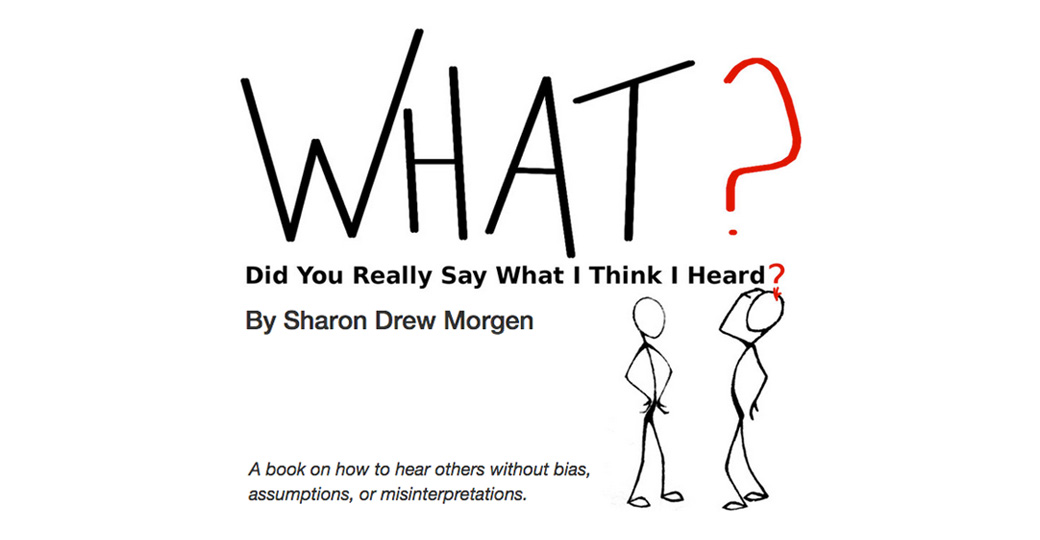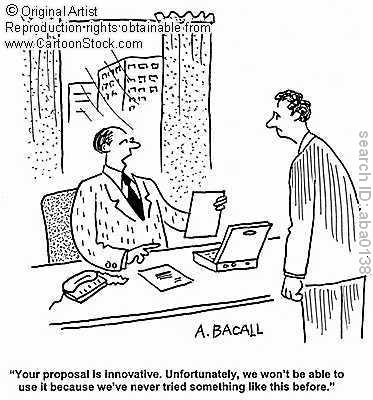Win the RFP by Adding Value
Years ago I ran a Buying Facilitation® program for a group of Senior Partners at KPMG. Before working with this team, they were using 2-4 people, spending between $500,000 and $1,000,000, to create large, glorious presentations to woo and wow prospects as part of their proposal responses. They won 20% of the business. That means some highly paid professionals wasted 80% of their time.
At the time, my KPMG client Dave told me he and a few others were working ’round the clock on a proposal after receiving an RFP from a large airplane manufacturer who had historically used the now-defunct Arthur Anderson. I asked him why the prospect wasn’t going to use AA again for this job (a $50,000,000 job, btw). He had no answer, but he called them:
DAVE: Why aren’t you using AA for this job?
AIRPLANE COMPANY: We are. We just needed a second bid.
I asked Dave to send me the RFP to see if I could find any issues within it that would provide an opening for KPMG to get the business. I noticed that like most RFPs, it sought an outcome without recognizing the scope of the complex internal issues involved. Without taking these issues into consideration, the project was en route to disaster. I figured if KPMG could help the potential client
- understand how to get all relevant stakeholders to buy-in,
- manage the complex collaboration and management issues the work required before, during, and after implementation,
they would not only be differentiated from the competition, but prove their value as real leaders and win the business.
We carefully went over the unresolved assumptions in the RFP and the areas it didn’t address at all. Knowing they weren’t giving us the business, we wrote a cover letter explaining we understood they were choosing Arthur Anderson. Instead of submitting a proposal we were offering some questions to help them think through what we considered to be problem areas.
I put together a list of Facilitative Questions that would help the client discover the underlying issues that had to be managed during the project. As a change facilitator, my focus is to help folks leading projects discover and implement their own route to change through their people and policy issues, and then guide them through their own choices. Here are two of the many questions we submitted, asked in such a way to enable them to discover their own answers:
How will you know when you have the right stakeholders, and appropriate buy-in, before you begin? How would you know, before beginning a project of this magnitude (a global undertaking), that one of the vendors would know how to bring together the full stakeholder and management teams to work together once it’s time to implement?
Of course, AA still won the business. But 6 weeks in to the project, they fired AA and called KPMG to come and do the work. Why? Here’s what they told my clients:
When we saw your questions, we realized we had not considered the implications of bringing in this type of change. When AA was not addressing these issues we realized we would potentially have a disaster on our hands as many of our folks weren’t buying-in and we had not properly managed the change. We would like you to take over, and start with the change management issues before you move ahead with the work.
The client needed success more than loyalty to a vendor. When they put together the RFP they hadn’t considered the full fact pattern to insure success. By providing a lens into how KPMG could lead them to discover their own excellence, KPMG won the bid – without even submitting a proposal or discussing price.
And going forward, each time KPMG received an RFP they first submitted Facilitative Questions to ensure the client knew the full scope of the problem. And as a result, they got a lot of business without a proposal at all.
RFPS CAN PROVIDE CLARITY
Sales folks assume that buyers merely need info, competitive price, and a relevancy statement about a solution to respond to the parameters offered by an RFP. But the tables are actually reversed: the companies use the proposals they receive to more fully understand their next steps. After all, they don’t know what they don’t know before the project. But you do, and here is where you can differentiate yourself; you can help them have clarity.
Instead of just responding with your solution and explanation of how great you are, help them discover how to create the right conditions for success by explaining how to ensure appropriate buy-in, and change management and implementation capabilities as part of the proposal process.
In my history of helping clients write winning proposals, I’ve discovered it’s possible to not only offer a good solution, but help their clients define the people and steps necessary for successful change. It then becomes obvious to choose you over the competition.
One more thought: if a buyer knows exactly how to choose one vendor over another, or one vendor has helped them through their steps to buy-in and congruent change, AND has the solution they need, they might not need an RFP.
_________________
Sharon Drew Morgen is a breakthrough innovator and original thinker, having developed new paradigms in sales (inventor Buying Facilitation®, author NYTimes Business Bestseller Selling with Integrity, Dirty Little Secrets: why buyers can’t buy and sellers can’t sell), listening/communication (What? Did you really say what I think I heard?), change management (The How of Change™), coaching, and leadership. Sharon Drew coaches and consults with companies seeking out of the box remedies for congruent, servant-leader-based change in leadership, healthcare, and sales. Her award-winning blog carries original articles with new thinking, weekly. www.sharondrewmorgen.com She can be reached at sharondrew@sharondrewmorgen.com.
Sharon Drew Morgen July 6th, 2020
Posted In: News


